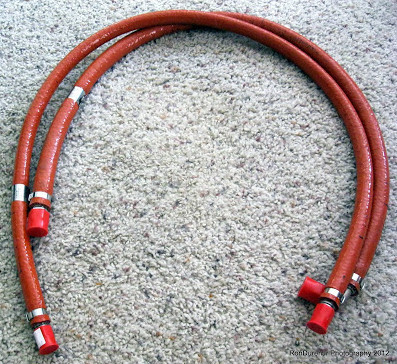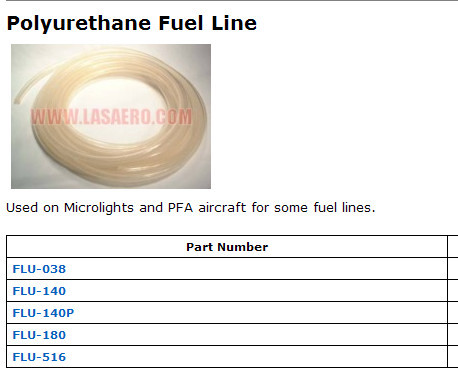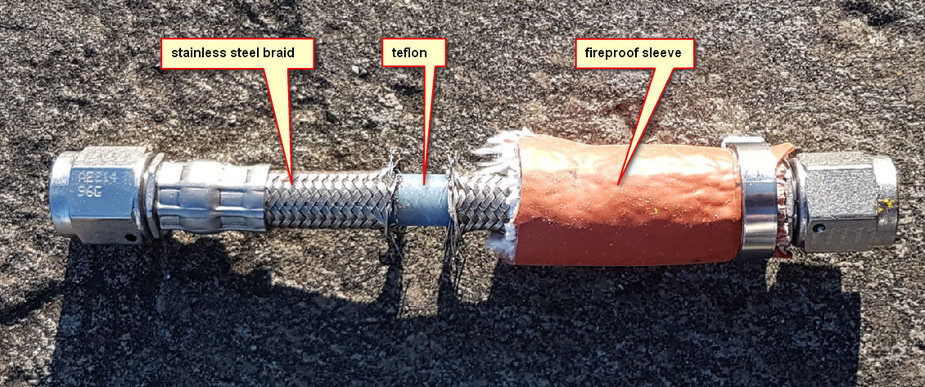Certified (fireproof sleeved)

Cost?
Under €100 per hose.
Homebuilt

Cost?

But the really curious thing is that the upper pic came from an RV project!
One can understand the certified requirement but why would an (in this case) RV pilot be less willing to die in an in-flight fire than the pilot of another homebuilt which uses the crappy clear plastic tubing?
On the scale of costs (say the cost of an engine like a Rotax 912) this stuff is completely trivial.
Usually a builder simply purchase a complete “Firewall Forward” kit that includes everything firewall forward from the manufacturer, whatever that may be. It could also just be a list of items at Aircraftspruce for instance. Very few sort out this kind of things themselves.
The cost is not what I would call trivial, US$ 4-5000 for an RV.
Besides, different fuel hoses are used at different places.
Yes; the stuff comes with the kit. And the same applies to brake hoses. For example the Lancair hoses (in the standard build kit) are the same clear plastic stuff, which leaks readily because the twist-on fittings are crap.
But for some reason some RV builders do put in the proper firesleeved hoses. The kit in your link, LeSving, doesn’t show firesleeved hoses. It just shows braided ones. And only a tiny part of the $5k will be the hoses, so changing them seems a no-brainer – as indeed some have evidently concluded.
It’s really easy to get a proper hose made up, if you have a sample.
Personally I’d use the certified hoses in mine. I have a fabric covered plane and anything that might make an engine fire worse is not a prospect I like to contemplate.
Myself use the black rubber stuff sold at car parts shops. AIUI, Rotax do the same, then add a separate fire-resistant orange sleeve.
I agree the polyurethane stuff is out of place under an engine hood; it is even not really good for syphoning fuel from jerrycans.
Peter wrote:
And only a tiny part of the $5k will be the hoses, so changing them seems a no-brainer – as indeed some have evidently concluded.
I wouldn’t say a no-brainer. Vans has put together something that works really well. Vans use Aeroquip hoses. They are already fire resistant to some degree. Vans also supply firesleeves by Aeroquip. They are TSO’d and rather cheap, less than $10 for a foot. What you see in that picture may very well be unsleaved hoses that are “re-sleaved” by the builder.
I had a little hose which had a leaky fitting. Actually the leak might have been the mating fitting having a scratch on it, but for the cost of these hoses – about 50 quid – it wasn’t worth keeping it and getting another leak. So I opened it up, in case anyone is interested:

This is one of the hoses called up in the Shadin fuel totaliser STC. Teflon hoses are not technically life-limited, though on some aircraft they might be by the aircraft registry or even in the MM.